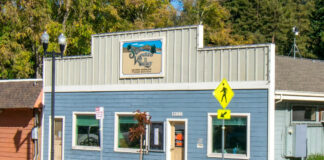I have recently seen an increase in what is called hand, foot and mouth disease, and an increased number of cases have been reported to the county health department. Some countries outside of the U.S. have seen an even greater number of infected people.
Hand, foot and mouth disease is a common illness caused by a virus that mostly affects children younger than 5 years of age. Child-care settings are frequent sources of the disease. Outbreaks usually occur during summer and fall months.
Most of those affected by this disease have no obvious symptoms. Those who do show symptoms will have perhaps a mild fever and small pimple-like lesions on the palms of the hands, the soles of the feet and inside the mouth.
Hand, foot and mouth disease is spread from person to person by bodily secretions, such as saliva, feces, and fluid from the pimple-like lesions and the nose or mouth. One can be infected by touching surfaces or objects that have been contaminated by infected individuals.
Transmission can be reduced by good hygiene. Individuals should wash hands thoroughly with soap and water, especially after changing diapers or using the toilet. Commonly used surfaces and soiled items, including toys, should be washed with soap and water or a solution of 1 tablespoon bleach in 4 cups water. People need to avoid kissing, face-to-face contact and sharing eating utensils or drinking containers with those who have hand, foot and mouth disease.
About a quarter of those affected recently by hand, foot and mouth disease are adults, who are showing a more severe rash and fever than the typical case. This rash often involves the extremities, face, buttocks and torso, in that order. Interestingly, it appears most commonly in skin previously damaged by sunburn or chronic conditions such as eczema.
There is no specific treatment for hand, foot and mouth disease. Treating symptoms of pain or fever with Tylenol or ibuprofen may be all that is necessary.
The most common complication of this disease is dehydration caused by sores in the mouth and throat making it very difficult to swallow. Affected children must be monitored closely for the amount of liquids they take in and the amount of urine they produce. Serious dehydration should be treated at a hospital emergency room.
Workers and students should not return to work or school until their fever has been gone for at least 24 hours and any skin lesions are dry and not oozing any liquid.
The good news is that this common disease usually has no long-term serious consequences and can, to some extent, be prevented by practicing good hygiene.
– Terry Hollenbeck, M.D., is an urgent-care physician at Palo Alto Medical Foundation Santa Cruz in Scotts Valley. Readers can view his previous columns on his website, valleydoctor.wordpress.com, or e-mail him at va**********@*******al.net. Information in this column is not intended to replace advice from your own health care professional. For any medical concern, consult your own doctor.












